Hey there,
In this blog, we're diving deep into Zomato's least-discussed subsidiary, Hyperpure, which quietly contributes about 27% to the company's total revenue today and has also crossed ₹ 5,000 Cr in annualized revenue. We'll explore what Hyperpure does, how it's growing, the size of the opportunity it presents, and how it can help create a moat for Blinkit through better supply chain management and hence becoming a crucial backbone for Zomato’s food and quick commerce businesses. Today’s blog is a bit lengthy, recommending to read it on browser here.
We're excited to share that this blog now reaches 1,700 subscribers, and we're committed to continuing our biweekly analysis of stocks we're bullish on. Do subscribe if you haven’t yet.
What does Hyperpure do, and how is it growing?
Started by former PayPal executive Dhruv Sawhney as ‘WOTU’ in 2015, it was later acquired by Zomato in 2018 and rebranded as Hyperpure. It is a business-to-business (B2B) platform that provides kitchen supplies to restaurants. Through Hyperpure, restaurants can order all their necessary ingredients from one place and have them delivered the next day. It is operates on low margins and has large volumes due to the nature of industry. The average order value (AOV) is much higher compared to a consumer facing business like Blinkit.
At time of acquisition, Hyperpure offered Zomato a unique cross-selling opportunity, helping to strengthen relationships with partner restaurants while also boosting revenue. Today, Hyperpure is evolving into an end-to-end supply chain solution for not just restaurants, but the entire HoReCa (Hotels, Restaurants & Caterers) industry, serving over 40,000 customers and positioning itself as a one-stop shop for their needs. But there is another angle to it…
“Quick commerce is turning out to be an opportunity for Hyperpure. It has begun supplying to the sellers on Blinkit’s marketplace….this has the potential to further accelerate revenue growth for Hyperpure going forward.”
- Deepinder Goyal, Nov ‘22
A significant opportunity lies with partnering with Blinkit, where Hyperpure supplies essentials like farm-fresh fruits and vegetables to Zomato's quick commerce arm, which promises to deliver it from their dark stores in just 10 minutes. By leveraging Hyperpure's infra & capabilities along building new capacities, Zomato is scaling up Blinkit rapidly, with plans to expand to over 2,000+ dark stores across India within the next 1.5 to 2 years. The strategy involves cutting out middlemen, sourcing directly from farmers, and providing consumers with high-quality produce at lower prices.
This synergy between Hyperpure and Blinkit, after Zomato's acquiring Blinkit in 2022, is now reflected in Hyperpure's skyrocketing revenue (which have 4X since Blinkit’s acquisition!) as the supplies that goes to the dark stores, gets accounted as revenue here:
Hyperpure v/s Global Peers
Even though the overall revenue growth has been solid, but compared to global peers, Hyperpure is still scratching the surface. We identified a few globally listed companies in similar space namely Sysco Corp, Performance Foods, US Foods, and United Natural Foods with all of them having primary operations in the USA besides a few more nations. They are involved in the supply/distribution of fresh, frozen, dry food and non-food products to the foodservice customers (primarily restaurants just like Hyperpure) and are 100X to 200X in dollar revenue size compared to Hyperpure currently. Even when taking into account the differences in purchasing power between India and the USA, the revenue gap remains substantial primarily due to two key factors we believe:
Larger Restaurant Industry Size in the USA: The restaurant industry in the USA is much larger, driven by a higher frequency of dining out. Unlike in the USA, eating out regularly is still not the norm for most people in India.
Sourcing Practices: In India, a higher proportion of restaurants source their ingredients from multiple local vendors (unorganized channels). This contrasts with the USA, where restaurants are more likely to rely on organized suppliers for their needs.
Both of these factors are rapidly changing. Indian eating habits are evolving, with more people becoming comfortable with consuming outside food. As a result, the overall ‘Food Services Market’ in India is expected to be more than double between 2023 and 2030, growing at a healthy 10-12% CAGR in real terms, according to a recent report by Bain & Swiggy. When you factor in food inflation of around 5%, which has been typical in India, the growth is projected to be 15-17% in nominal terms over the coming years.
Additionally, there is a gradual shift from unorganized to organized sourcing of supplies by restaurants, which directly benefits Hyperpure. As more restaurants begin to streamline their supply chains and rely on organized suppliers, they stand to gain significantly.
While the global peers have been operating in a band of 2% to 5% EBITDA margins, Zomato’s Hyperpure also eventually aims to reach there or a notch higher in the medium to long run, but with the short-term focus continuing to be on growth as per management’s guidance.
“We expect 5% to 10% EBITDA margins for this business (Hyperpure) in a steady state”
- Akshant Goyal, CFO Zomato (Aug ’22)
Finding the Moat in Retail
In a hyper-competitive space, finding your moat that gives you a distinct advantage over the competitors becomes crucial for any business, as it helps in protecting market share and profitability. As Blinkit, Zepto & Swiggy Instamart as essentially offering the same service to customers, Zomato’s management has been questioned about their moat in their quick commerce business (Blinkit) on various occasions, and we have 3 different responses from 3 key people:
Deepinder Goyal, Zomato Founder (Apr ‘24) - “Any competitive tactics in terms of delivery fleet or anything (in quick commerce) can be copied or paid for. I think the culture of the team and mindset to innovate on a constant basis is the only moat”
Sanjeev Bikhchandani, Zomato’s largest shareholder (Apr ‘24) - “ … every organization has a strategic focus & the only thing Blinkit does is quick commerce. Now if a broader horizontal e-commerce player like Flipkart/Amazon also does quick commerce, it will remain an ‘also’ with diverted focus”
Albinder Dhindsa, Blinkit’s Founder & CEO (Aug ‘24) - “Selection availability and consistency of high-quality services are better than competitors which helps us get customers in new cities wherever we enter (in South India).”
All responses seem interlinked and indeed its your culture in organization that derives execution, but one thing that definitely plays a very important role and could be your potential moat in retail is your supply chain management. From farms to your customer’s house, every step has to optimized to its max which would drive your profitability and push all inefficient players out of the game in long run once the funding tap runs off.
“More often than not, distribution is the only real moat”
- Vaibhav D. (CEO Better Captial)
Supply chain efficiency - Why is it important?
Over the past two decades, the modern retail and supermarket space in India has seen numerous global and local giants enter—and often exit—the market. In 2006, Walmart made its entry into India through a joint venture with Bharti Enterprises, launching large modern stores under the brand name ‘BestPrice’. By 2012, Ludhiana became one of the first Tier-2 cities in India to witness two of the world's biggest supermarket chains, Walmart and METRO, setting up shop right in front of each other. Local players like Pantaloons (part of Future Group), Spencer’s Retail, and Shoppers Stop were also highly active in retail commercial leasing during that period.
Following the government's approval of 100% FDI in single-brand retail and 51% in multi-brand retail, the landscape became even more competitive with the arrival of other global players like Tesco and Carrefour announcing their plans to enter the Indian market.
Surge in competition led to significant profit compression across the industry, as deep-pocketed players fought fiercely to gain market share. This intense rivalry eventually triggered a phase of consolidation, marked by key developments such as:
METRO Cash & Carry was sold to Reliance for Rs 2,850 Cr
Walmart (Best Price) was consolidated into Flipkart (also owned by Walmart) and never grew beyond ~30 stores
Future Retail Group (Big Bazaar) is bankrupt & owes more than Rs 30,000 Cr of debt to Indian banks
Out of all this chaos, there were two players who stood out: DMart & Trent
DMart focused on ensuring best-in-class unit economics driving its topline and concentrated on enhancing its entire supply chain. This includes direct bulk buying from manufacturers, efficient warehousing and meticulous inventory management. By keeping operational costs low, DMart was able to offer lowest prices on grocery items, which consistently attracted customers.
Similarly, the apparel major Trent, which operates stores under the brands Zudio, Westside, and Zara (in a joint venture), has also paid close attention to its supply chains and private labels. They've focused on quicker stock replenishment compared to industry standards. For instance, Zudio’s inventory turnover ratio is 10 times a year, compared to around 4 times for its competitors. This efficiency has led to significantly better profitability compared to their peers.
If you're interested in learning more about Trent's strategies and operations, check out this podcast:
The outcome of these strategic efforts is that DMart and Trent are among the few retail companies in India who are cornering most of the profits made by the retail sector. This profitability has resulted in explosive returns for their shareholders over the past five years, making them standout performers in the retail sector:
Can Blinkit boost its supply chains with help of Hyperpure?
Blinkit has been investing heavily in building warehouses in South India in recent times. Whether its opening 3.08 lakhs sq ft warehouse space at Sumadhura Logistics Park in Bengaluru in early 2024 or the founder & CEO Albinder visiting the rural areas in South, meeting farmers and ensuring direct future sourcing from them, the team is getting all in to tap the potential as their aim to quadruple their dark stores by end of 2026.
“It (ongoing capex) is a combination of the Blinkit store scale-up and partly, we're increasing some warehousing capacity on the Hyperpure side.”
- Kunal Swarup, Corporate Development Head (Aug ‘24)
“Farm to fork” as the key selling point of Hyperpure, it perfectly fits in as a key strategic asset for Zomato which help the parent in tapping the potential on both restaurants side as well on the quick commerce side.
And that is also the reason why they have been heavily investing big in building capabilities on workforce and warehousing side. The employee count for Hyperpure on Linkedin has gone to 3X in last 2 years (From July 2022 to July 2024) as show in chart below:
On the other side, they have been investing heavily towards building warehousing capabilities in new major cities like Chennai in month of May 2024 and also achieved 94% ‘On-time delivery’ on first day of operations itself. Here is a picture of their latest large warehouse designed for 170 tonnes of throughput capacity:
To Conclude…..
Things are moving quickly for Blinkit, especially in South India, as they expand into cities traditionally dominated by Zepto and Swiggy Instamart. As Blinkit continues to execute at a lightning pace, opening newer and larger dark stores, Hyperpure is perfectly positioned to support them through its supply chains that source directly from farmers and deliver fresh produce to customers' doorsteps.
On the other hand, as more restaurants choose to source all their inputs from a single vendor rather than multiple suppliers, coupled with the expected healthy mid-teen growth for many years in the overall food service market, the growth drivers for Hyperpure remain strong. This synergy between Blinkit and Hyperpure is setting the stage for continued success in both ventures.
Finding Outperformers is a free-to-access website, and each blog takes a month of effort to finalize. If you've read this far and you find our research useful, consider supporting our efforts by contributing here:
We hope you enjoyed reading the blog. You can find Aditya here and Anuj here. Let us know your feedback and what more you want us to cover on quick commerce space in India.
Read our previous publications:
Wondering how you can support us?
If you find our content valuable & are willing to support, show some love here⬇️
Disclaimers-
We are not a SEBI registered advisor; personal investment/interest in the shares exists for the company mentioned above; this isn’t investment advice but our personal thought process; DYOR (do your own research) is recommended; Investing & trading are subject to market risk; the decision maker is responsible for any outcome.
********************************************************






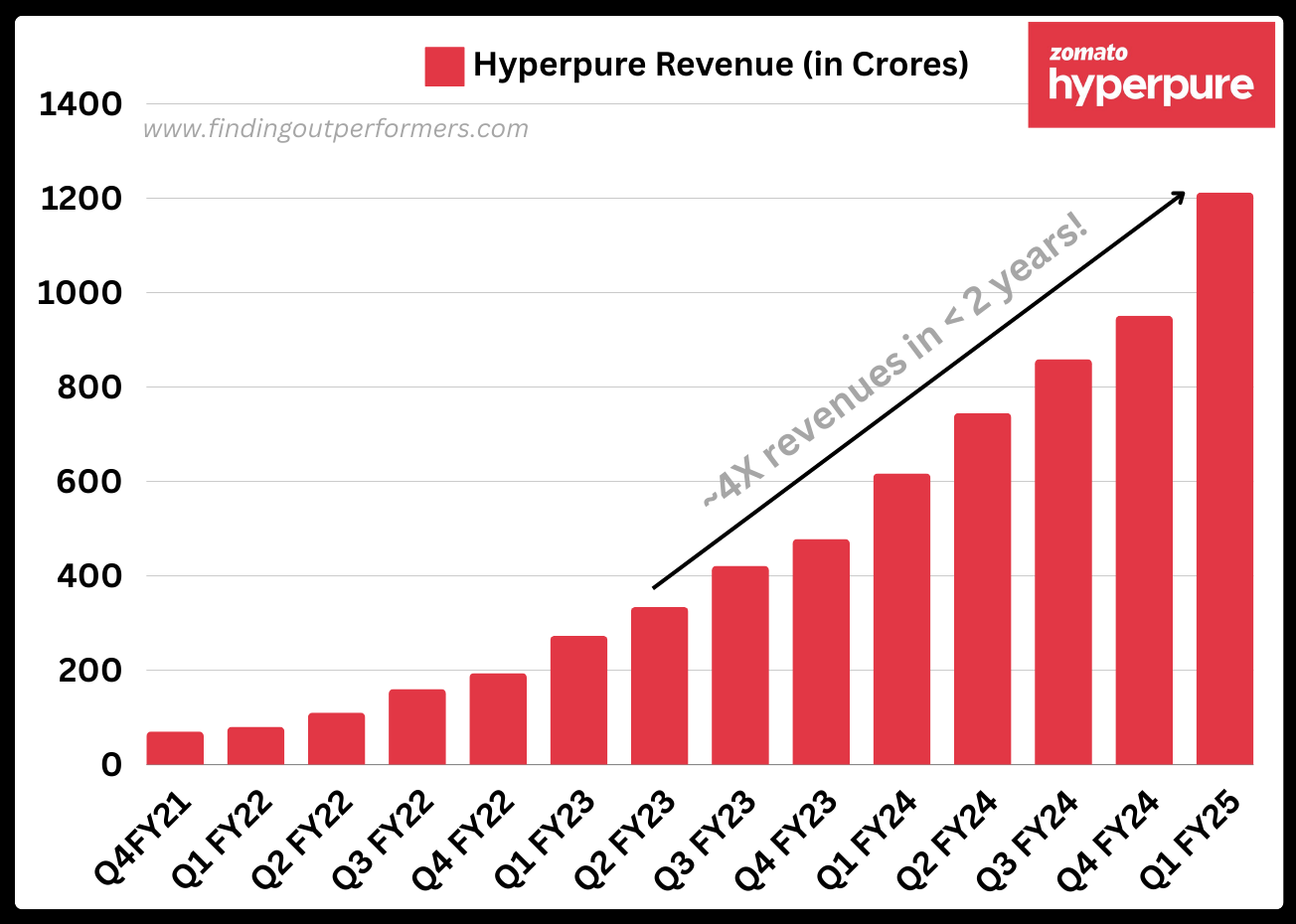
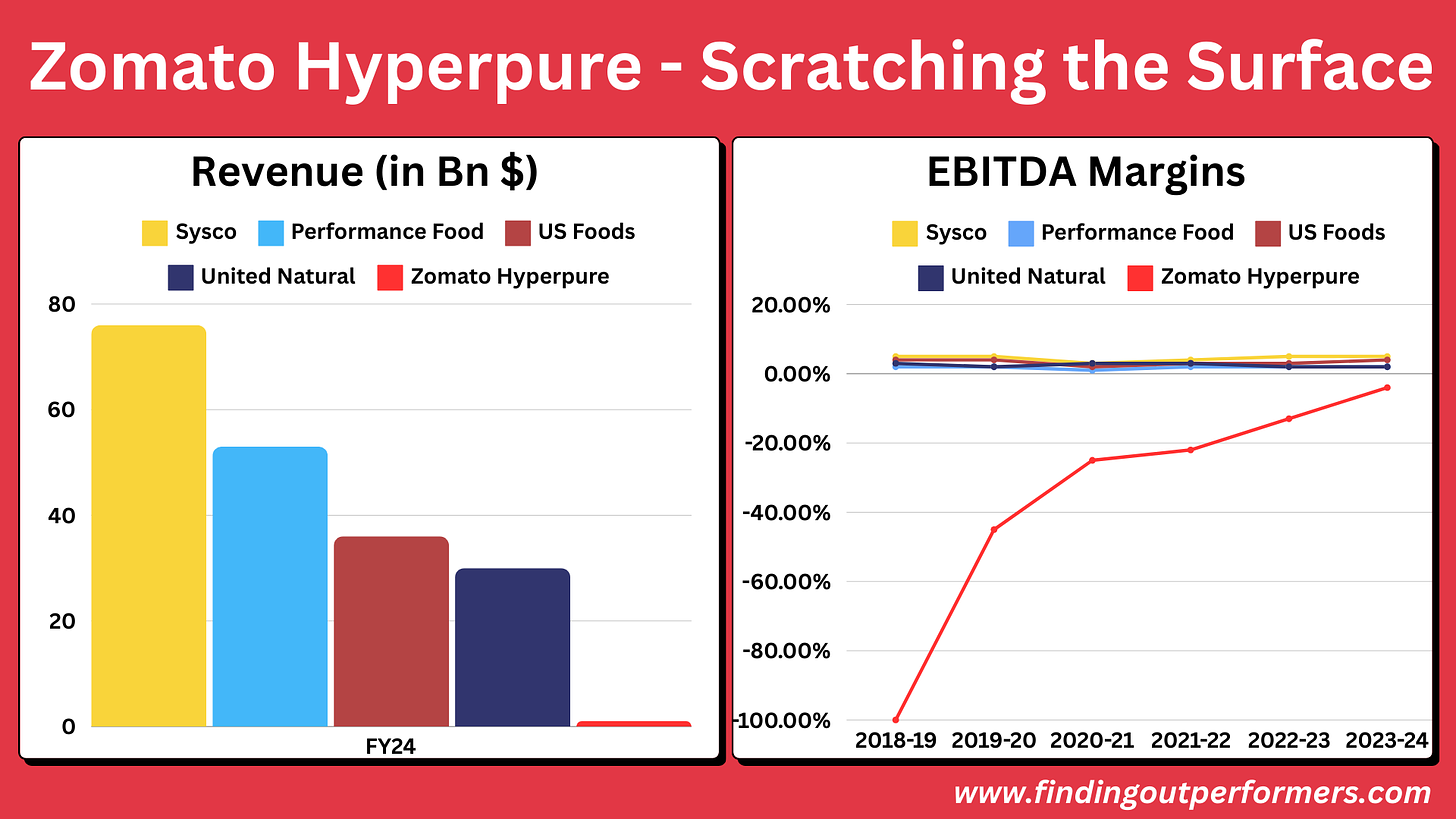
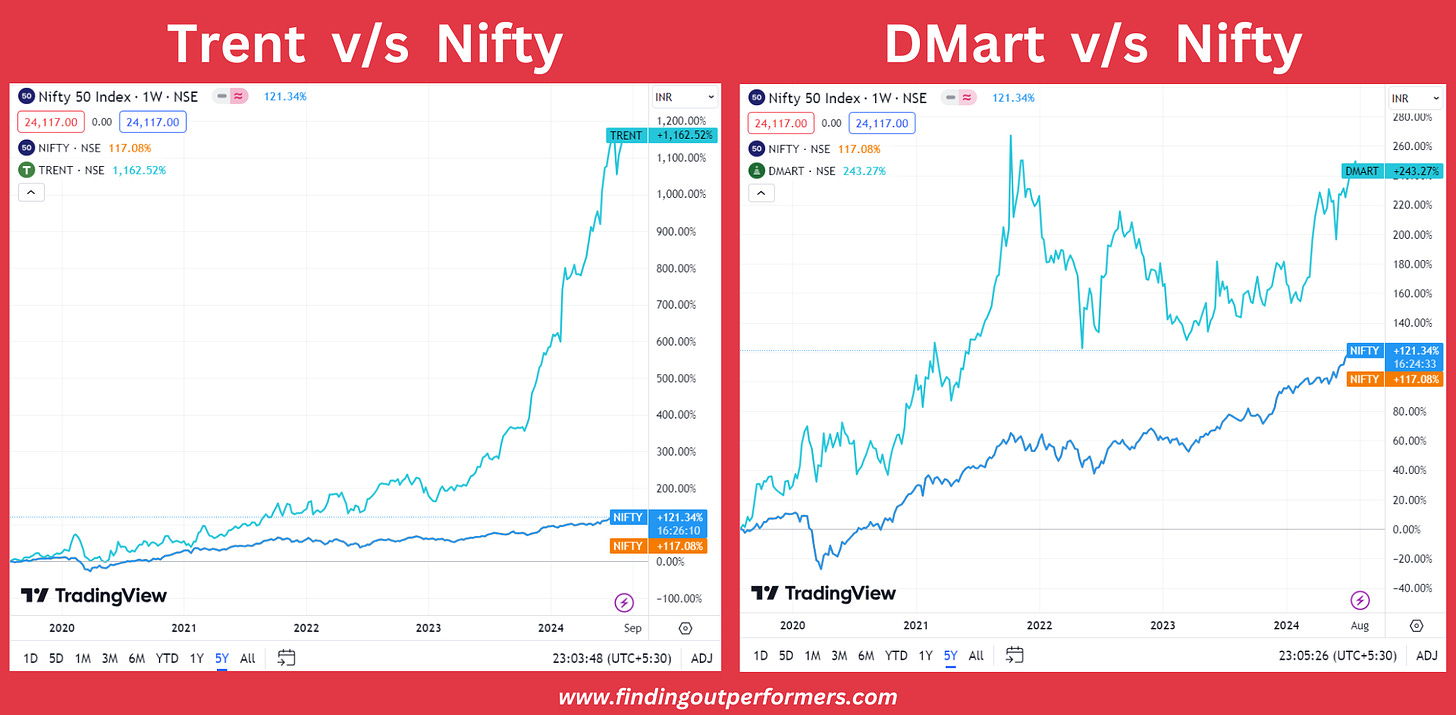

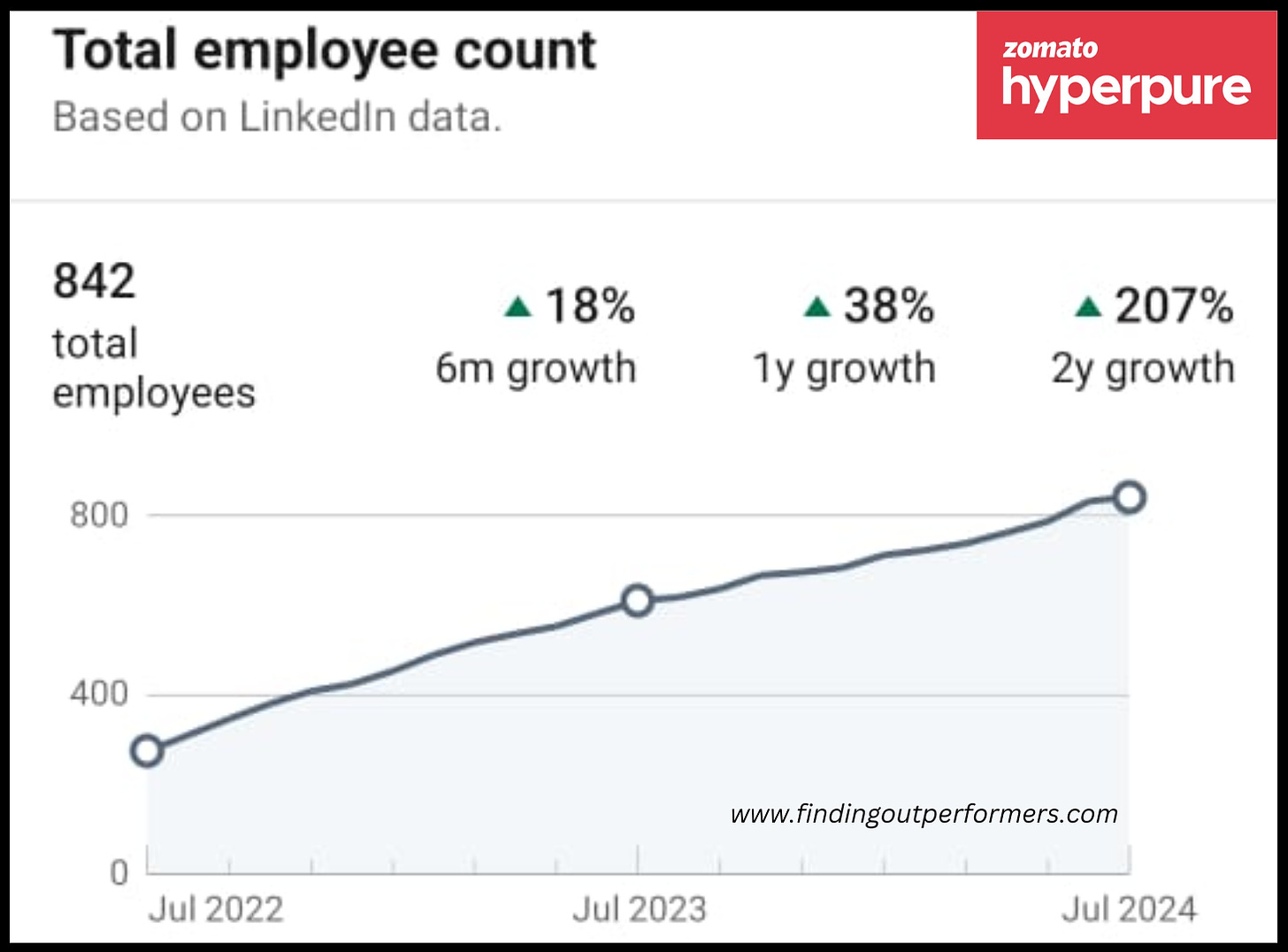
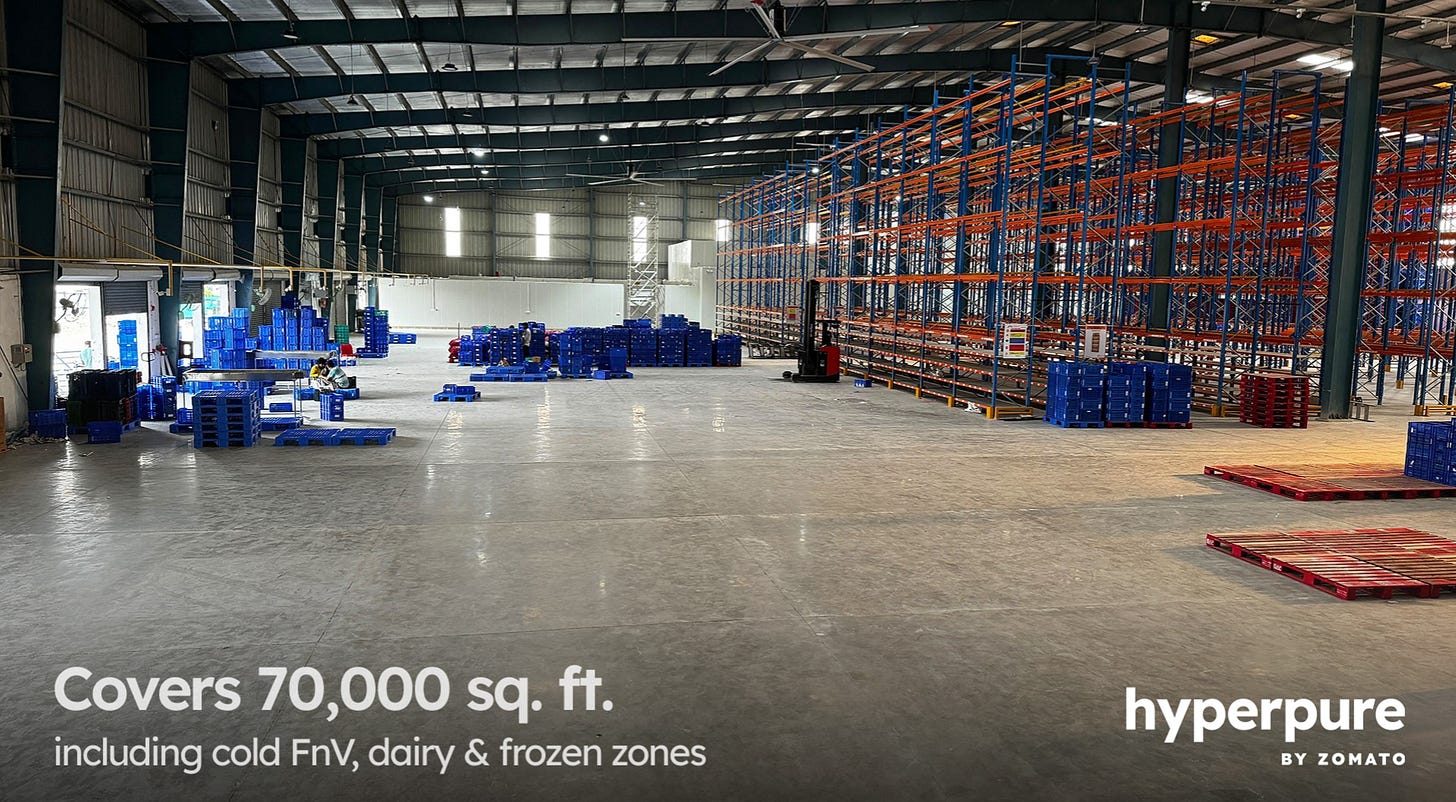

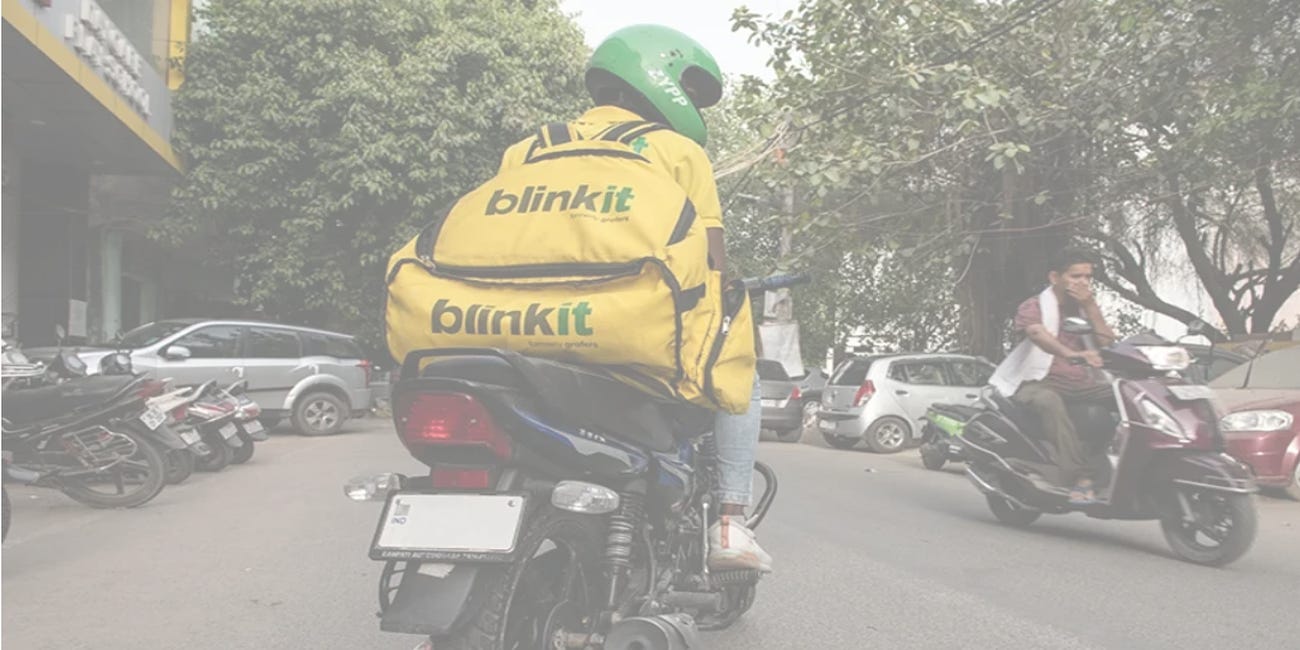

What beautiful research! And the way it has been articulated is impeccable! Superb stuff! Keep up the good work!
Fascinating article! Thanks for writing.